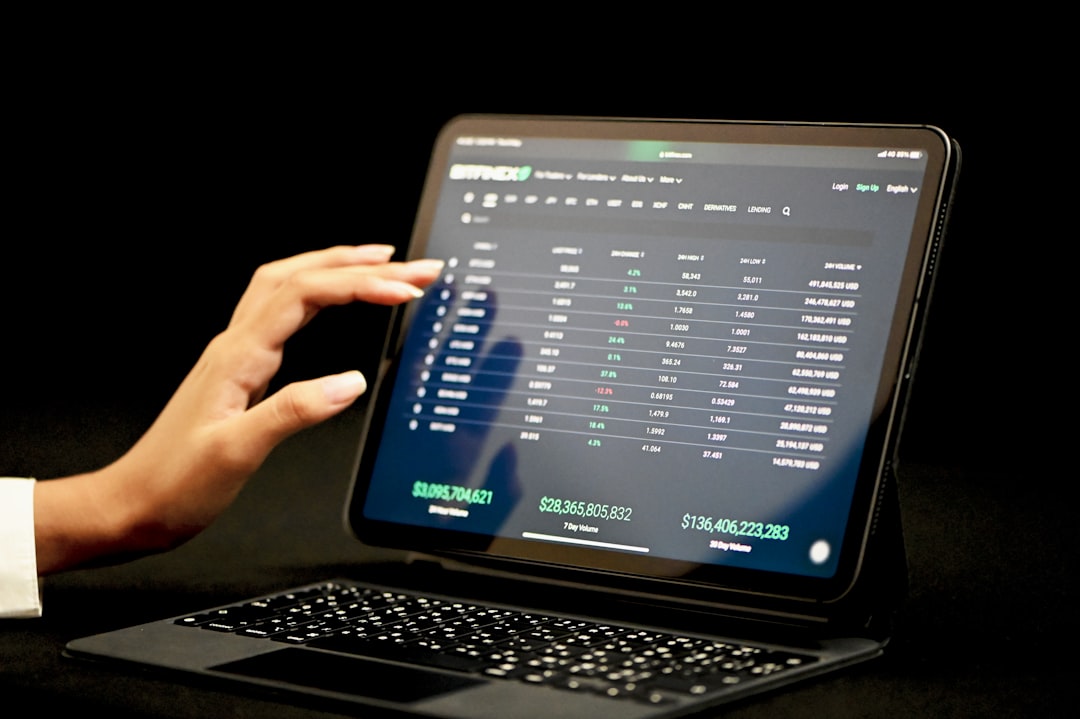

Engage prospects with a scan and streamline customer engagement with FREE QR code marketing tools by Sona – no strings attached!
Create a Free QR CodeFree consultation

No commitment

Engage prospects with a scan and streamline customer engagement with FREE QR code marketing tools by Sona – no strings attached!
Create a Free QR CodeFree consultation

No commitment
In today’s digitally driven world, QR codes have evolved from a novelty to a strategic powerhouse in bridging offline engagement with online action, especially as online trading schools face rising pressure to deliver streamlined, data-informed learning experiences that can efficiently adapt to student needs. For institutions challenged by fragmented feedback channels and disengaged students, QR codes represent a scalable way to gather feedback and course insights without imposing hurdles such as app downloads or complex logins.
Instead of relying on outdated, manual processes that often miss high-value student input, QR codes can be strategically placed on course completion certificates, printed study guides, or incorporated in virtual orientation sessions, inviting real-time participation. By letting students conveniently share input as impressions are forming, schools close critical gaps where feedback is most actionable, boosting survey response rates and surfacing valuable course improvement data that, if missed, can mean lost opportunities for both the student and the school.
This guide walks through best practices for leveraging QR codes in online trading schools to capture real-time feedback. You will find practical strategies for implementation, efficient tracking methods that avoid the blind spots of anonymous engagement, and examples demonstrating how modern platforms transform these campaigns into concrete, quantifiable outcomes.

Many trading schools still rely on sporadic email surveys or paper forms, which leads to missed feedback from students who engage but never voice their experience. QR codes simplify participation and increase the odds of capturing feedback at the exact moment when perceptions are forming. By adding scanning touchpoints throughout each phase of the learner journey, every moment where feedback could be shared is effortlessly captured and turned into structured, actionable data.
The biggest shift is replacing analog or delayed feedback methods with immediate calls to action that live wherever students are already paying attention. Certificate frames, printed handbooks, lesson-end slides, webinar screens, and course dashboards can all prompt students with a simple scan that opens a short, mobile-friendly form via a Google Forms QR. The result is a consistent rhythm of real-time input that guides curriculum improvement and student support with far greater precision than post-course email blasts.
To deploy this approach effectively:
Modern tools now make it possible to unify code creation, distribution, and analytics from a single platform. By tracking participant-level actions and synchronizing data with your CRM or student information system, schools avoid the pitfall of missing critical feedback that might otherwise remain hidden. Instructors can rapidly test improvements, quickly resolve issues, and focus on the learning changes that have the largest impact on student satisfaction and outcomes. Platforms like Sona QR streamline this entire lifecycle so feedback capture becomes a dependable part of the learning fabric, not a sporadic task.

One of the core pain points for online trading schools is the persistent disconnect between course delivery and real-world student engagement. Traditional feedback loops such as post-course emails, static web forms, and manual surveys often result in delayed or incomplete insight. High-value prospects or frustrated students can remain untracked, and their perspectives go unheard. QR codes address these issues with immediate, low-friction calls to action that work wherever students interact with your materials, as outlined in this QR marketing guide.
QR campaigns also simplify the complexity of continuous improvement for trading curricula where content often evolves quickly. When market conditions change or new trading tools emerge, your questions and resources can shift without redesigning materials. Dynamic QR codes give schools a practical way to keep feedback prompts and learning support in sync with what students need right now.
QR codes matter in online trading schools because they directly solve five persistent issues:
For trading schools, these advantages play out on materials students already use: printed study guides, digital orientation kits, webinar slides, certificate folders, and virtual classroom overlays. When QR codes are integrated into these touchpoints, schools turn every interaction into a measurable signal that guides program growth and student success.

Many trading schools struggle to balance multiple feedback collection channels, leading to inconsistent results and missed opportunities. QR codes provide flexible formats that integrate tightly with existing workflows and help unify your feedback strategy.
A practical rule of thumb is to use web link and form formats for feedback, SMS or email for time-sensitive support, and app download or vCard formats for ongoing relationships. When you are unsure whether student needs will evolve, choose dynamic QR codes that can be updated without losing historical analytics. Sona QR supports all of these formats in one dashboard, making it easy to keep assets consistent, on-brand, and measurable.

Online trading schools often face the dual pain points of low survey completion and a lack of actionable data. The best way to reverse this trend is to place QR codes where attention and motivation are highest. Focus on moments when students are actively engaged or have just achieved a milestone, as that is when feedback quality and willingness to respond are at their peak.
Think beyond the end-of-course email. Strategic placement of QR codes across the learner journey builds a continuous loop of insight that covers onboarding, learning, assessment, and post-graduation, drawing on Sona QR’s education strategies. When you design placements around intent and context, you get richer feedback with less effort from students and staff.
High-yield placements include:
Replacing antiquated, manual forms with contextually relevant scanning opportunities not only boosts completion rates, it connects each piece of feedback to a precise moment and topic. This granularity helps instructors prioritize improvements that prevent attrition, reduce confusion in high-friction modules, and concentrate resources where they will have the biggest payoff.

A recurring challenge for trading schools is unconverted interest. Students may consume content, attend a lab, or access support but never leave feedback, resulting in lost opportunities for improvement and upsell. QR codes meet students where they are and make feedback a natural part of the learning flow.
Well-designed use cases align with the student journey and map each scan to an outcome you can measure. This lets you quantify which modules inspire enthusiasm, which create confusion, and which audience segments are most likely to advocate for your program.
By mapping QR placements to student journeys, every scan becomes a feedback-driven event with clear engagement data. Analytics reveal where patterns indicate a need for curriculum rework or extra support. This structured approach supports higher retention, targeted cross-sell to advanced tracks, and informed decisions about where to invest production resources next.
Each QR scan is a signal containing intent, timing, and context. By assigning unique QR codes to different phases of the journey such as onboarding, mid-course, and post-course, schools can segment learners automatically and tailor outreach to each group. This turns feedback collection into a foundation for growth marketing that respects context and personalizes value.
Segmentation can be surprisingly rich when you tag codes by topic, channel, and action. For example, a scan from a risk management module might place a student into a nurture track that shares advanced position sizing guides, while a scan from a support QR could trigger an automated check-in from an advisor two days later. With CRM sync, feedback becomes the fuel for meaningful follow-up rather than a static data point.
For online trading schools, audience distinctions often include prospective students exploring program fit, current enrollees seeking immediate help or clarity, and alumni open to advanced tracks or referral programs. Sona QR centralizes these tags and automates the sync with systems like HubSpot or Salesforce so marketing and student success teams can act on the signals right away.
Fragmented campaigns produce inconsistent experiences and waste budget. QR codes function as connectors between your offline and online channels, ensuring that every flyer, slide, or email can capture intent and route people to the right next step. This increases clarity for learners and simplifies performance measurement for your team.
A cohesive QR strategy also helps you test and learn across channels without rebuilding your stack. You can keep the same landing page and tracking while experimenting with copy, placement, or creative in your welcome kits, course dashboards, and events. The result is a unified journey that feels consistent and student-centered from first touch through graduation.
Here are ways to tie QR codes into the channels online trading schools use most:
A centralized QR management platform, like Sona QR, lets you manage all codes and destinations and sync scan data with your CRM and ad platforms. This gives you a clear view of cross-channel performance and the confidence to scale into new placements without losing insight.
Clarity at the outset determines the quality of your outcomes. Before printing or sharing anything, define exactly what you want the scan to accomplish and which audience will be scanning. When your objective is precise, your choice of QR format, CTA, and destination becomes straightforward.
Use the following checklist to move from idea to launch with minimal friction. Each step includes practical guidance that maps to online trading school workflows and typical media formats.
Start by aligning the QR code with a specific outcome. Examples include collecting module-level feedback, routing support requests, or capturing interest at a recruiting event. Resist the urge to create a generic catch-all code, because focused prompts drive higher engagement.
Choose between static and dynamic QR codes based on how much flexibility and tracking you need. In most feedback or event scenarios, dynamic codes are the better fit because they allow edits without reprinting and provide analytics. Learn more about static vs dynamic.
Good design improves scannability and encourages action. Prioritize clarity, brand alignment, and short, persuasive CTAs. Always test your codes before distributing to avoid frustrating students. See this QR tutorial video.
Deploy in the places most likely to be seen and scanned by your target audience. Connect each placement to a destination that matches the moment and motivation.
Post-launch, instrument your campaign so you can learn and improve quickly. Integrate data with your CRM and marketing tools so insights translate into action.
Feedback is more than a checkbox. It is a leading indicator of satisfaction, learning progress, and program demand. Yet many schools cannot trace engagement from scan to enrollment or retention. Advanced QR tracking closes this gap by turning every scan into actionable intelligence and tying it to real outcomes.
The goal is not just to count scans. You want a clear picture of how QR-driven engagement influences the learner journey. Which touchpoints lead to the most detailed feedback, requests for tutoring, or readiness to enroll in advanced tracks? Which modules correlate with higher satisfaction and referral likelihood? Connecting these dots requires device-level data, channel attribution, and identity resolution.
With Sona QR and Sona.com, you can:
Benchmarks vary by audience and placement, but strong campaigns often achieve a scan-to-visit rate near 90 percent for mobile-optimized destinations, a visit-to-submit rate of 25 to 40 percent for short forms, and measurable lifts in survey volume of 30 percent or more when replacing email-only outreach. Use these as starting points, then set goals that reflect your media mix and student preferences.
Consistent, actionable feedback depends on more than code distribution. Strategy and follow-through are essential to transform engagement into outcomes. Applying a few best practices can dramatically increase scan rates, completion, and the quality of insights you collect.
Start by aligning your QR deployment with the most common media types in your school, then build automation that respects the student’s context. The right message at the right moment drives response. The right workflow ensures that the data you capture leads to improvement.
Creative deployment examples for trading education include QR codes on printed trade journal inserts that link to an options Greeks explainer or on bootcamp invoices that open a renewal discount survey. These placements convert routine materials into measurable touchpoints that serve both the student and the school.
Online trading schools often wrestle with missed prospects and low survey engagement, especially when programs span both live and asynchronous learning. Schools that embed QR codes at feedback-rich moments consistently report sharp increases in actionable input. For instance, institutions that added QR feedback forms to completion certificates saw up to 40 percent more detailed suggestions within two weeks of graduation. These timely insights accelerated curriculum updates and reduced the lag between problem detection and resolution.
One school layered QR prompts at the end of high-friction modules, which surfaced a recurring confusion about position sizing in volatile markets. In response, the curriculum team inserted a short case study, a worksheet, and a live Q&A dedicated to that topic. Within one quarter, module satisfaction rose by 18 percent, and tutoring requests on that topic declined by 22 percent. Another program placed QR codes on event signage during recruiting seminars and added a one-question interest qualifier. That change doubled the number of qualified leads captured at the moment of curiosity, while also tagging audiences for tailored follow-up such as futures versus options tracks.
Creativity matters as well. Consider a live trading lab that pauses mid-session for a two-minute “pulse check” with a QR prompt. Students rate clarity and request specific examples. The instructor adapts on the fly, and the team later maps those scans to a topic taxonomy for future improvements. For alumni engagement, a quarterly update email includes a QR link to a testimonial capture form with structured prompts and consent. Compelling stories collected this way feed your website, social proof for ads, and even peer-led webinars that showcase graduate success. For more ideas, browse these QR examples.
The broader trend is clear. As QR campaigns become smarter, more contextual, and better integrated with CRM and analytics, their ROI and impact on continuous program optimization steadily climb. The schools that win are those that treat scans as signals, route them to the right workflows, and act on what the data reveals week to week.
QR codes are more than technical shortcuts for online trading schools. They create a holistic, student-centered platform for capturing actionable input, surfacing previously hidden engagement signals, and optimizing every part of the learning journey. Every scan captures intent and context, allowing teams to shift from reactive outreach to proactive improvement and from sporadic surveys to continuous insight.
By unifying QR strategy across courseware, events, and communications, schools can drive higher response rates, streamline operations, and build a durable analytics foundation. With Sona QR, you can generate, brand, and manage codes in minutes; update destinations on the fly; and sync data to your CRM to trigger follow-ups automatically. Sona.com extends that value by connecting scans to revenue through identity resolution and multi-touch attribution so you see how engagement contributes to enrollment and long-term program health.
Embracing QR-driven feedback initiatives positions online trading schools to anticipate and respond to evolving student needs. Closing feedback gaps that were once caused by anonymous engagement and fragmented collection methods lifts program quality, reduces churn risk, and accelerates innovation. Start creating QR codes for free.
QR codes have revolutionized online trading schools by transforming traditional feedback collection into an interactive, data-driven process. They enable seamless learner engagement, real-time feedback gathering, and actionable insights that help improve course quality and student satisfaction. Imagine instantly capturing the thoughts and preferences of your students with a simple scan—empowering you to tailor your offerings and boost retention like never before.
With Sona QR, you can create dynamic, trackable QR codes that update in real time without the hassle of reprinting materials. Every scan provides valuable data linked directly to your feedback goals, helping you identify trends, enhance the learning experience, and drive continuous improvement. Start for free with Sona QR today and turn every student interaction into meaningful growth for your online trading school.
QR codes enable real-time, low-friction feedback collection from students across various touchpoints, improve survey response rates, bridge offline and online engagement gaps, allow dynamic content updates, offer detailed tracking and attribution, and reduce administrative workload.
Schools should place QR codes at key milestones like syllabus reviews, live labs, assessments, and certificates, link to mobile-optimized forms without login barriers, use clear benefit-focused calls to action, add tracking for attribution, automate data workflows, and centralize management with a unified dashboard.
Common QR code formats include web links to surveys or resources, mobile-optimized forms for feedback, app download prompts, SMS or email pre-filled messages for support, event check-ins, vCards for contact sharing, and Wi-Fi access for on-site sessions.
High-impact placements include certificates and handbooks, digital course dashboards, welcome packets, recruiting event materials, webinar screens, video overlays, and printed collateral to capture feedback, support requests, and lead generation.
Integration allows automatic segmentation of learners by journey stage and intent, triggers personalized follow-ups, enriches student records with scan data, supports retargeting campaigns, and provides a unified view of engagement that drives enrollment, retention, and upsell opportunities.
Best practices include defining clear objectives and target audiences, choosing static or dynamic codes based on tracking needs, creating brand-aligned and scannable designs with benefit-led CTAs, testing codes across devices, deploying on relevant channels, and monitoring and optimizing campaign performance continuously.
By capturing feedback at moments of high student engagement with precise attribution, QR codes provide granular, timely insights that enable targeted curriculum improvements, faster issue resolution, higher retention, and data-driven decision-making.
The article does not provide specific information about career prospects after graduating from an online trading school.
The article does not mention the costs associated with online trading schools.
The article does not specify the qualifications or certifications that online trading schools provide.
The article does not give direct guidance on selecting the best online trading school but emphasizes the importance of schools that leverage real-time feedback and data-driven improvements using tools like QR codes to enhance student engagement and learning outcomes.
The article does not list or rank any specific online trading schools.
Use Sona QR's trackable codes to improve customer acquisition and engagement today.
Create Your FREE Trackable QR Code in SecondsJoin results-focused teams combining Sona Platform automation with advanced Google Ads strategies to scale lead generation

Connect your existing CRM

Free Account Enrichment

No setup fees
No commitment required

Free consultation

Get a custom Google Ads roadmap for your business






Launch campaigns that generate qualified leads in 30 days or less.
